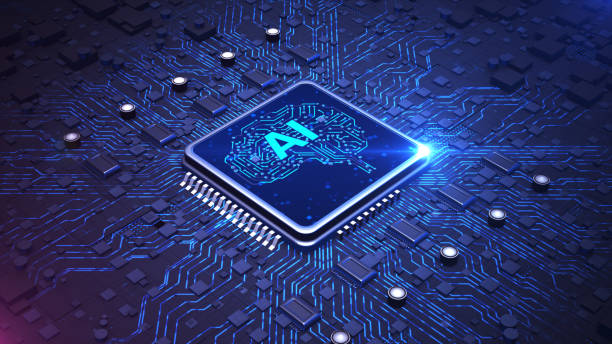Cybersecurity is one of the most vital scientific and technological disciplines of the 21st century. As our lives increasingly move into digital spaces—banking, communication, healthcare, transportation, and even national defense—protecting data and systems from malicious actors has become as critical as securing physical borders. Yet, cybersecurity is not merely about installing antivirus software or setting strong passwords. It is a vast and evolving field grounded in mathematics, computer science, information theory, behavioral psychology, and even artificial intelligence. Understanding how hackers are stopped requires an exploration of the science, strategy, and engineering behind every layer of modern digital defense.
The Foundations of Cybersecurity
At its core, cybersecurity is the science of protecting digital systems—computers, networks, and data—from unauthorized access, modification, or destruction. It is based on three fundamental principles known as the CIA Triad: confidentiality, integrity, and availability. Confidentiality ensures that only authorized individuals can access information. Integrity guarantees that data remains accurate and unaltered. Availability ensures that systems and information are accessible when needed.
These principles are implemented through a combination of technologies and methodologies that involve cryptography, secure communication protocols, access control systems, network defense mechanisms, and threat detection models. In essence, cybersecurity is about creating controlled environments in which trust can exist in an inherently untrustworthy digital world.
The discipline combines elements of pure science and applied engineering. Its theoretical backbone rests on mathematics, especially number theory, algebra, and probability, which form the basis of cryptography. Its practical side draws from computer engineering, system design, and human behavior, as most cyberattacks exploit not only technical vulnerabilities but also psychological weaknesses in users.
The Digital Battlefield: Understanding Hackers
Before understanding how hackers are stopped, one must first understand who hackers are and how they operate. In the scientific study of cybersecurity, hackers are not viewed merely as criminals but as actors within a dynamic system of attack and defense. Their motivations can range from financial gain and political influence to personal challenge or ideological conviction.
Hackers exploit vulnerabilities—flaws or weaknesses in software, hardware, or human systems—to gain unauthorized access to data or disrupt services. These vulnerabilities can exist due to programming errors, poor configuration, outdated systems, or inadequate user awareness. Cybersecurity experts classify attacks by their mechanisms: malware, phishing, denial-of-service, SQL injection, cross-site scripting, ransomware, and many others. Each of these techniques is a form of applied computer science that manipulates the logical structures of digital systems.
The science behind cybersecurity seeks to understand these attack vectors at their most fundamental level, enabling defenders to predict, detect, and neutralize them before they cause harm. In this sense, cybersecurity is a continual race between innovation and counter-innovation—a digital arms race where every advancement in defense prompts new methods of attack.
Cryptography: The Mathematical Shield
The first and most essential line of defense in cybersecurity is cryptography—the science of encoding and decoding information. Derived from the Greek words kryptos (hidden) and graphein (to write), cryptography transforms readable data (plaintext) into an unreadable format (ciphertext) using mathematical algorithms. Only those who possess the proper decryption key can restore the original information.
Modern cryptography relies on advanced mathematics to ensure that unauthorized users cannot easily break encryption. One of the most important breakthroughs was public key cryptography, introduced in the 1970s. Unlike traditional symmetric encryption—where the same key is used for both encryption and decryption—public key cryptography uses two related keys: a public key for encryption and a private key for decryption. The relationship between the two is based on complex mathematical problems that are easy to compute in one direction but extremely hard to reverse without the proper key.
For example, the RSA algorithm, one of the most widely used encryption systems, is based on the difficulty of factoring large prime numbers. Even with modern supercomputers, factoring a 2048-bit RSA key would take an astronomical amount of time—longer than the age of the universe with current technology. Similarly, elliptic curve cryptography (ECC) uses the properties of algebraic curves to provide equivalent security with smaller keys, making it more efficient for mobile and embedded devices.
Cryptography underpins nearly every secure transaction in the digital world—from sending an email and making an online purchase to accessing a bank account. Secure protocols such as HTTPS, SSH, and TLS all rely on cryptographic foundations. The science of cryptography is not static; it evolves constantly to stay ahead of advances in computing power and algorithmic attacks.
Quantum Threats and Post-Quantum Security
One of the most pressing challenges facing modern cryptography is the advent of quantum computing. Unlike classical computers, which process information in binary bits (0s and 1s), quantum computers use quantum bits or qubits, which can exist in multiple states simultaneously due to superposition. This gives them the potential to solve certain mathematical problems exponentially faster than traditional computers.
Quantum computers could theoretically break many of today’s cryptographic systems. For example, Shor’s algorithm can factor large numbers efficiently, rendering RSA and similar algorithms obsolete. This has led to the emergence of post-quantum cryptography, a field dedicated to developing encryption methods resistant to quantum attacks.
Post-quantum algorithms use mathematical problems believed to be unsolvable even by quantum computers, such as lattice-based cryptography, code-based cryptography, and multivariate polynomial equations. Governments and research institutions around the world are now standardizing these systems in preparation for the coming quantum era.
Network Defense: The Science of Detection and Containment
Cryptography protects data in transit and storage, but cybersecurity must also defend the networks through which that data flows. Network defense combines computer science, statistics, and information theory to monitor and control the flow of information across interconnected systems.
One of the most fundamental components of network defense is the firewall, a system that monitors incoming and outgoing traffic based on predefined security rules. Firewalls can be hardware, software, or both, and they act as the first gatekeepers of digital systems. More advanced forms, such as next-generation firewalls, integrate deep packet inspection and intrusion prevention systems to identify and block malicious activity in real time.
Intrusion detection and prevention systems (IDPS) represent another scientific advancement. These systems analyze patterns of network behavior, comparing them against known signatures of malicious activity or using machine learning algorithms to identify anomalies. The science behind IDPS involves probability theory, pattern recognition, and data analytics, which allow defenders to identify subtle signs of infiltration before it becomes catastrophic.
In large-scale systems, cybersecurity engineers also use honeypots—decoy systems designed to lure hackers and study their behavior. Honeypots serve both as traps and research tools, providing valuable data about attack techniques and vulnerabilities that can be used to strengthen defenses.
Artificial Intelligence and Machine Learning in Cybersecurity
The complexity and scale of modern digital infrastructure make manual monitoring impossible. Artificial intelligence (AI) and machine learning (ML) have therefore become indispensable tools in modern cybersecurity. AI algorithms can analyze vast quantities of data in real time, identifying suspicious patterns that may indicate ongoing attacks or system vulnerabilities.
Machine learning models are trained using large datasets of known network behavior, malware signatures, and user activity. These models learn to distinguish between normal and abnormal activity, often detecting threats that traditional systems might miss. For example, anomaly detection models can identify deviations in network traffic that suggest data exfiltration or insider threats.
Deep learning—an advanced subset of machine learning that uses neural networks—has proven especially effective for identifying malware. Instead of relying on fixed signatures, deep learning models can learn the underlying structure of malicious code, allowing them to detect new variants of malware automatically.
AI also enhances incident response through automation. Security orchestration, automation, and response (SOAR) systems use AI to coordinate defensive actions across multiple tools, reducing response time and minimizing damage. These systems can isolate infected machines, block malicious IP addresses, or automatically patch vulnerabilities—all without human intervention.
However, AI is a double-edged sword. The same technologies used for defense can also be employed by attackers. Adversarial machine learning—where hackers manipulate AI models by feeding them deceptive data—has become an emerging threat. This ongoing battle highlights the dynamic and adaptive nature of cybersecurity science.
Human Factors: The Psychology of Cyber Defense
Despite all technological advances, one of the weakest links in cybersecurity remains the human element. Social engineering exploits human psychology rather than technological flaws. Phishing emails, fraudulent websites, and deceptive messages are designed to trick individuals into revealing sensitive information or installing malware.
The science of defending against such attacks involves understanding how humans perceive risk, make decisions, and respond to authority or urgency. Cognitive psychology and behavioral economics play an increasingly important role in cybersecurity. For example, research has shown that people are more likely to click on malicious links if they appear to come from trusted contacts or contain emotionally charged content.
Cybersecurity awareness training, therefore, is not just a corporate policy—it is a scientifically grounded intervention aimed at modifying human behavior. Effective training programs use psychological principles such as repetition, contextual learning, and simulation to build long-term awareness. Behavioral analytics systems can also monitor user activity to detect deviations that might indicate compromised credentials or insider threats.
In addition, modern authentication systems use biometrics—such as fingerprints, facial recognition, or voice patterns—based on biological and behavioral characteristics. The science behind these systems involves pattern recognition, signal processing, and statistical modeling, ensuring that each identity is unique and difficult to forge.
Malware Analysis and Reverse Engineering
Malware—short for malicious software—is one of the most common tools of hackers. Understanding how malware operates is crucial to stopping it. The process of malware analysis and reverse engineering involves dissecting malicious code to uncover its functionality, behavior, and origin.
Static analysis examines the code without executing it, looking for known signatures, suspicious instructions, and encryption routines. Dynamic analysis, on the other hand, runs the malware in a controlled environment (called a sandbox) to observe its behavior in real time.
Reverse engineering malware requires expertise in computer architecture, operating systems, and programming languages. Analysts use disassemblers and debuggers to reconstruct the logic of the code, identify communication patterns, and detect methods used to evade detection. The insights gained from this process help cybersecurity experts develop patches, improve antivirus systems, and strengthen defenses against similar attacks in the future.
The Science of Digital Forensics
When a cyberattack occurs, digital forensics comes into play. It is the scientific discipline of collecting, preserving, and analyzing digital evidence in a way that is admissible in court. Digital forensics involves reconstructing events from logs, files, and network traces to determine how an attack occurred and who was responsible.
The process follows a rigorous methodology based on chain-of-custody principles to ensure that evidence is not tampered with. Forensic experts use tools to recover deleted data, trace IP addresses, and identify the origins of malicious code. Techniques such as timeline analysis, memory forensics, and file system analysis allow investigators to understand the scope and impact of breaches.
Digital forensics also overlaps with data science and cryptanalysis. Decrypting encrypted evidence, analyzing large datasets for patterns, and correlating multiple sources of information require advanced mathematical and computational skills.
Global Cybersecurity and National Defense
On a global scale, cybersecurity has evolved into a matter of national security. Cyber warfare, espionage, and state-sponsored attacks have become as threatening as conventional military aggression. Governments now maintain cyber defense agencies that use advanced technologies and intelligence operations to protect critical infrastructure such as power grids, communication systems, and financial networks.
The science of cyber defense at the national level involves large-scale network monitoring, threat intelligence sharing, and predictive analytics. Many nations use cyber threat intelligence (CTI) systems that collect and analyze information from multiple sources to identify and neutralize threats before they materialize.
In addition, cyber deterrence strategies mirror those of traditional warfare—countries establish doctrines of proportional response and invest in offensive cyber capabilities as a form of deterrence. The balance between offense and defense in cyberspace is maintained through complex international relations, treaties, and norms that govern state behavior.
The Role of Blockchain in Cybersecurity
Blockchain technology, originally designed for cryptocurrency, has become a promising tool in cybersecurity. A blockchain is a decentralized ledger that records transactions in a way that is transparent, immutable, and verifiable. Once data is recorded on a blockchain, it cannot be altered without the consensus of the network, making it highly resistant to tampering.
From a scientific perspective, blockchain’s security is rooted in cryptographic hash functions and distributed consensus algorithms. Each block in the chain contains a cryptographic hash of the previous block, ensuring that any modification would break the entire sequence. Consensus mechanisms such as Proof of Work and Proof of Stake prevent malicious actors from gaining control of the network.
In cybersecurity, blockchain can be used to verify digital identities, secure Internet of Things (IoT) devices, and create tamper-proof audit trails. Its decentralized nature eliminates single points of failure, reducing the risk of large-scale breaches.
The Future of Cyber Defense: Predictive and Autonomous Security
As cyber threats grow more sophisticated, the future of cybersecurity lies in predictive and autonomous systems. Predictive security uses data analytics and artificial intelligence to anticipate attacks before they occur. By analyzing global threat patterns and correlating billions of data points, these systems can forecast vulnerabilities and recommend preemptive actions.
Autonomous security systems go a step further by taking independent action in real time. Powered by AI and adaptive algorithms, these systems can identify new types of attacks, isolate affected components, and deploy countermeasures without human input. The underlying science involves reinforcement learning and self-healing networks—systems capable of learning from their environment and evolving continuously.
However, this autonomy introduces new challenges. As machines make more security decisions, ensuring transparency, accountability, and ethical oversight becomes essential. Cybersecurity science must therefore integrate not only technical expertise but also ethical and legal principles to safeguard both data and human rights.
Cybersecurity and the Human Future
The future of cybersecurity is deeply intertwined with the future of civilization itself. Every advancement in digital technology—from smart cities to autonomous vehicles and space systems—creates new opportunities but also new vulnerabilities. The science behind cybersecurity must therefore evolve in step with human innovation.
Education will play a crucial role in this transformation. As cyber threats grow, societies must cultivate a new generation of scientists, engineers, and thinkers who understand not only how technology works but how to protect it. Interdisciplinary collaboration between computer scientists, mathematicians, psychologists, and policymakers will shape the next frontier of digital defense.
Ultimately, cybersecurity is a reflection of the human condition. It embodies our drive to create, connect, and protect what we value. Hackers may evolve, and technology may change, but the principles of scientific inquiry, logic, and resilience will always form the foundation of defense. The science behind cybersecurity is not just about stopping hackers—it is about safeguarding trust in the digital age, ensuring that the immense power of technology serves humanity, not against it.
Conclusion
Cybersecurity stands at the intersection of science, technology, and human behavior. Its foundations in mathematics, computer science, and information theory make it one of the most intellectually demanding and practically vital fields of modern life. From encryption and artificial intelligence to behavioral psychology and national defense, it encompasses the full spectrum of human knowledge applied to a single mission: the protection of information.
The battle between hackers and defenders is a perpetual one, driven by the same curiosity and creativity that fuel scientific progress. Yet, through the rigorous application of science—through cryptography, intelligent systems, and a deep understanding of human nature—hackers can be stopped, and digital systems can remain secure.
The science behind cybersecurity is, ultimately, the science of trust. It is the effort to preserve order in a chaotic digital universe, to maintain privacy in a world of connection, and to uphold integrity in an age defined by data. In the end, cybersecurity is not just a field of study—it is the guardian of the digital civilization humanity has built, and the key to its safe and sustainable future.






